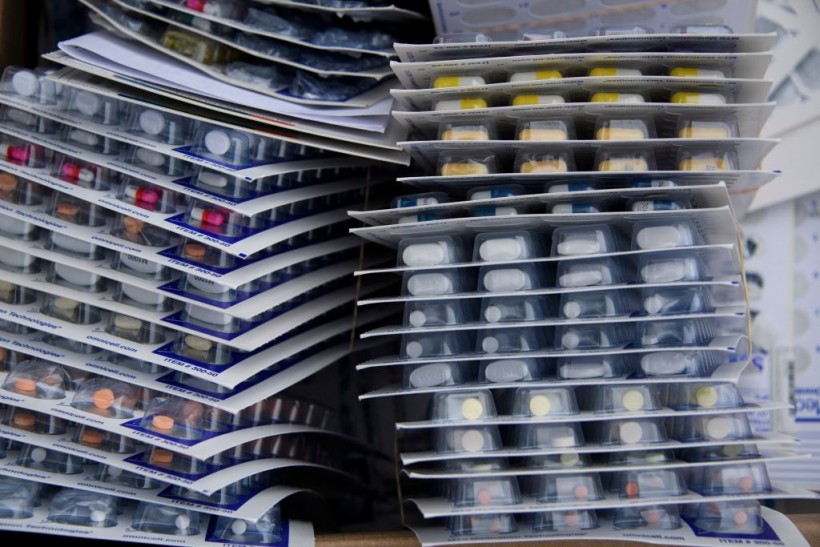Authorities from the United States recently warned Americans to not purchase prescription pills online as they are increasingly contributing to fatal doses of methamphetamine and fentanyl.
A ScienceAlert report specified that according to the Drug Enforcement Administration, the recommendation applied to counterfeit medicine made to appear like authentic Vicodin, Oxycontin, Adderall, and Xanax.
In a statement DEA issued, it said fake pills are generally available on social media and e-commerce platforms.
According to Anne Milgram, DEA administration, counterfeit pills that contain these hazardous and tremendously addictive drugs are more fatal, not to mention, more accessible than ever before.
ALSO READ: Active Enzyme Needed to Unlock Carrot Health Benefits

Containers of pills and prescription drugs are boxed for disposal during the Drug Enforcement Administration (DEA) 20th National Prescription Drug Take Back Day at Watts Healthcare on April 24, 2021 in Los Angeles, California
Soaring Death Tolls Due to Drug Overdose
Milgram added DEA lab analyses reveal, "two in every five fake pills" with fentanyl have a possibly lethal dose. Moreover, this rare public advisory, as indicated in this report as the first since 2015, comes as US drug overdose deaths climbed to 93,000 in 2020, the highest rate ever recorded.
A similar Science Atlas report indicated, Fentanyl, for instance, the synthetic opioid most generally found in fake pills, is the main driver of the increase in death tolls, explained the DEA.
In addition to that, overdoses that involve methamphetamine, increasingly discovered to be pressed into fake tablets, are yet another factor.
Over 9.5 million fake pills were seized thus far this year, more than the last two years, combined. The vast majority of these counterfeit drugs were developed in Mexico, with China providing chemicals for the manufacturing of fentanyl in Mexico.
Increasing Number of Drug Overdose in San Francisco
SFGATE reported that San Francisco is in the grips of an unparalleled drug epidemic as fentanyl is flooding the "street-drug marketplace" that intensifies the peril of addiction, and resulting in a staggering number of deaths from overdose.
While myriad other drugs like cocaine, heroin and particularly, methamphetamine, are part of the recreational drug supply of the city, the number of accidental overdose mortalities tied to the surprisingly inexpensive, potent, and addictive opioid, rose to 483 percent between 2018 and 2020.
This report also indicated that fentanyl was found in the blood of 89 out of the 260 people in all, who died from an overdose in the state in 2018, whereas, it was present in more than 500 of the over 700 individuals who overdosed last year.
Illegal Use of Fentanyl
Unlawful use of fentanyl, which can be 50 times stronger than heroin, arose in San Francisco, just a few years ago. As recently as the mid-2000s, the DEA said it did not seize any of the said drugs in its North California region.
The agency apprehended in 2016, 15 kilograms and numbers increased in the following years. Last year, the division apprehended 29 kilograms of the fake drug, and this year thus far, 74 kilograms have been seized.
This was an amount that could kill up to 37 million people when one takes into consideration that two milligrams are a fatal dose.
Wade Shannon, special agent in charge of the DEA's San Francisco field division with a region that stretches from the border between California and Oregon to Bakersfield said, that's twice what they seized a year ago, "and we're not even done with the year." Commenting on the figures, Shannon added, "We're drowning in fentanyl."
Related information about this fake pill is shown on the American Addiction Centers' YouTube video below:
RELATED ARTICLE: Drug Combination Could Lower High Sugar Levels and Control Weight Gain in Diabetic People
Check out more news and information on Medicine & Health in Science Times.














